


Vanilla has one of the world's most evocative aromas, adopted by different regions and cultures in subtly different ways. It has been a key ingredient in some of the most iconic perfumes ever since we first synthesized vanillin over a century ago.
Our passion for vanilla has grown over 150 years. From first synthesizing vanilla in 1874 to developing our own sustainable supply chain in Madagascar, vanilla is a constant source of inspiration to us.
One of the world’s most valuable spices, vanilla’s olfactive richness fascinates perfumers, offering endless creative opportunities. From the natural richness of green vanilla to rich, indulgent gourmandise aromas, vanilla offers a wide range of fragrance directions. This is one of the reasons it is so popular across the world, but understanding regional preferences and trends is essential when it comes to creating fine fragrances and scent profiles that translate into successful products.
From conducting regional insight studies to annually updating the Symrise Genealogy of Fragrances, we’re constantly working to understand what consumers want, what the next trends will be and the role technology will play in future scent directions. We also send our perfumers on scent expeditions, allowing them to source inspiration from around the globe, bringing their new discoveries into products that delight consumers everywhere.
When it comes to scent, people’s preferences are wonderfully diverse, formed by their own experiences, where they live and the communities they live in. From edible and indulgent to fresh and powdery, hitting the right note with a vanilla scent begins with knowing the nose it’s intended for.
Brazil is the world’s largest fragrance market, with sales rising by almost 70% in the past five years
Germans spent €12.85billion on personal care products in 2012 – a billion more than in 2004
Today the number of new fragrances brought to market each year can be as many as 500; in 1974, there were around 20 new fragrances a year
Knowing what works
The only way to know what it is that delights consumers is to immerse yourself in their world.This is exactly what our marketing and evaluation teams do, every day.
Smell two variations of one product and you’ll have a favorite. But, have you ever stopped to think exactly what it is that means you reach for something spicy over something floral? Or why it is you always want to smell that candle when it comes to Christmas? Chances are you haven’t. But we have.
Identifying what it is that consumers want, often before they even know they want it, is all part of the job for Kristina Nowak, Marketing Group Manager for Scent Homecare across Europe, Africa and the Middle East. “When it comes to scent everything we do is aimed at a specific market – for a specific end user,” she explains. “Different countries associate different things with different scents, so what works in Dubai for example, won’t necessarily be what works in France.”
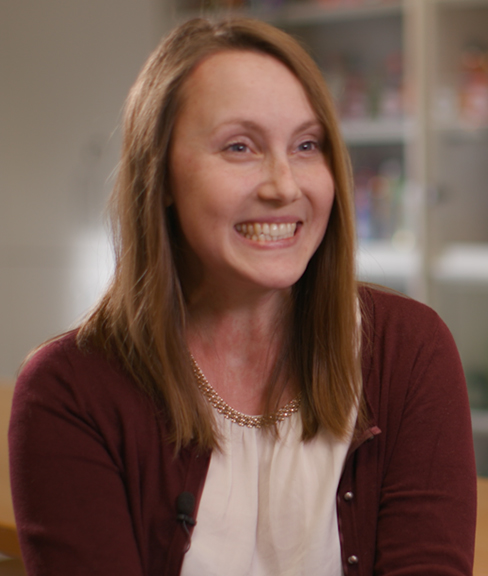
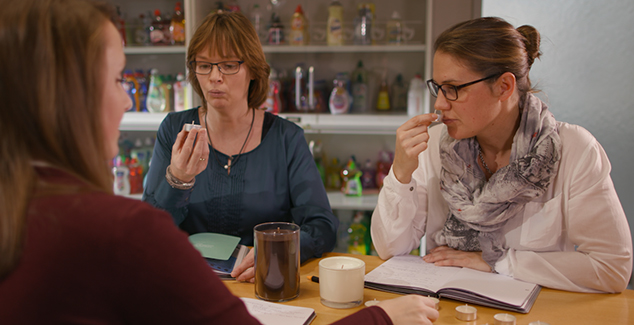
My job surprises me every day. Even though vanilla is a fragrance classic, it’s so versatile that I’m always discovering new fragrance profiles using it in ways I’ve not seen before.
Vanilla is the perfect combination scent. It works with almost everything, and brings a new dimension to every scent it harmonizes with. Whether we’re using it in a limited edition Christmas candle, drawing out its warm, comforting quality, or combining it with rhubarb for a fresh take on a nostalgic classic, it offers endless varieties. Vanilla is our secret weapon – its versatility means we can always offer customers a new fragrance profile that not only fits their brief, but also delights their consumers.
Smell two variations of one product and you’ll have a favorite. But, have you ever stopped to think exactly what it is that means you reach for something spicy over something floral? Or why it is you always want to smell that candle when it comes to Christmas? Chances are you haven’t. But we have.
Identifying what it is that consumers want, often before they even know they want it, is all part of the job for Kristina Nowak, Marketing Group Manager for Scent Homecare across Europe, Africa and the Middle East. “When it comes to scent everything we do is aimed at a specific market – for a specific end user,” she explains. “Different countries associate different things with different scents, so what works in Dubai for example, won’t necessarily be what works in France.”
“That’s true even when you’re talking about a fragrance classic like vanilla. It’s on the market all year long and almost every customer has a vanilla scent in their product range, but the aroma qualities consumers want from vanilla scents are as diverse as you could imagine. For some, such as the US consumers, there is a strong desire for edible, indulgent scents – think chocolate or baking smells – whereas elsewhere it’s all about fresh, almost cosmetic scents.”
“And it’s not just the specific market that can have an impact on preferences. Tastes vary depending on the time of year, particularly in regions where you see a big changes in weather season to season. World events, such as the Olympics, can also have an impact: we’ll see a big increase in the demand from our customers for limited edition scents that evoke a particular place or mood.”
“Once you start to think about it, you see that trends and the things that influence them are everywhere. What we need to do for our customers is identify which ones are important; we go through a screening process to identify the trends that matter so that we can offer our customers solutions that will work for them. This means that a lot of our work is proactive. We’re looking at what’s new, such as Pantone releasing its colors for the year, and translating that into new products and solutions that will inspire and surprise our customers.”
“We also need to know what’s new; are there new products or new ways of doing things that we can learn from? We spend a lot of time evaluating products, thinking about how they work and where we can use what we’re seeing to add value for our customers. For this, we work very closely with our evaluation team. We’ll all sit together and smell and discuss new products or trends on an almost daily basis.”
My job surprises me every day. Even though vanilla is a fragrance classic, it’s so versatile that I’m always discovering new fragrance profiles using it in ways I’ve not seen before.
“Of course, the other main focus is specific customer projects. When we get a new project, one of the first things we’ll do as well as looking at the market it’s intended for, is to look at what that customer currently has in their range. We’ll evaluate and map their products onto our genealogy of fragrances – a tool we first developed over 40 years ago for categorizing fragrances – so that we can see if there is a certain aroma they don’t currently offer, or if there is a clear gap in the market somewhere.”
“This is where vanilla really comes into its own. Vanilla is the perfect combination scent. It works with almost everything, and brings a new dimension to every scent it harmonizes with. Whether we’re using it in a limited edition Christmas candle, drawing out its warm, comforting quality, or combining it with rhubarb for a fresh take on a nostalgic classic, it offers endless varieties. Vanilla is our secret weapon – its versatility means we can always offer customers a new fragrance profile that not only fits their brief, but also delights their consumers.”
A voyage of discovery
Understanding future trends and consumer preferences is essential to creating fragrance solutions that people love. But creating those solutions also requires inspiration. That’s why we send our perfumers on scent expeditions, to discover new scents and raw materials from around the world.
Madagascar, the global heart of vanilla production, offers boundless inspiration for our perfumers. Our scent expeditions are a chance for our perfumers to experience this wonderful country with all their senses, finding inspiration not only in vanilla, but in the rich and diverse range of raw materials that call the island home.

We were overwhelmed with the number of species on the island, and the hard work that the farmers put into cultivating and harvesting.
Finding a way to combine insight with inspiration is essential to meeting the present and future needs of our customers. But for us, the complexity of consumer preference is just another source of inspiration.
A fragrance family tree
40 years ago, a perfumer at Haarmann & Reimer, one of our predecessor companies, saw a need to categorize all the fine fragrances on the market. There was nothing else like it at the time, and today, as we continue to publish the genealogy of fragrances each year, it’s still unique in the industry.
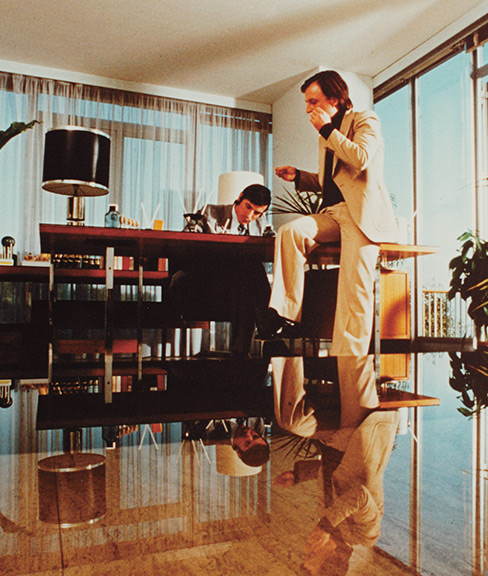
Everything started in a quiet little office, with a piece of paper folded like a map.
Despite the Symrise genealogy having been around for over four decades, the way that fragrances are classified hasn’t changed. The team still sits together, smelling each fragrance in turn and categorizing it by family, sub–family and specifier. Differences of opinion arise, just as they did when Peter Wörner, the H&R perfumer who first created the genealogy 40 years ago, would ask his colleagues for their input.
Today, we produce different versions of the genealogy covering masculine and feminine fragrances, as well as functional products like laundry detergents and deodorants. A team of perfumers, evaluators and marketing colleagues test and assess new additions to each genealogy, as well as adding descriptors of the notes of fragrances and families, and marking key information such as if the scent is an archetype or a market it has been successful in. In this way, we can easily identify where opportunities exist for creating new fragrances or products that are not currently in the market.
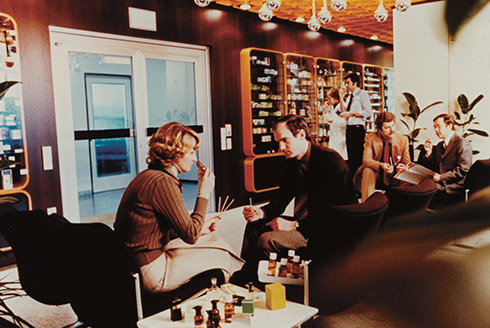
We wanted to develop a tool that would be understood and used throughout the industry.
Everything started in a quiet little office, with a piece of paper folded like a map.
Despite the Symrise genealogy having been around for over four decades, the way that fragrances are classified hasn’t changed. The team still sits together, smelling each fragrance in turn and categorizing it by family, sub–family and specifier. Differences of opinion arise, just as they did when Peter Wöner, the H&R perfumer who first created the genealogy 40 years ago, would ask his colleagues for their input.
Today, we produce different versions of the genealogy covering masculine and feminine fragrances, as well as functional products like laundry detergents and deodorants. A team of perfumers, evaluators and marketing colleagues test and assess new additions to each genealogy, as well as adding descriptors of the notes of fragrances and families, and marking key information such as if the scent is an archetype or a market it has been successful in. In this way, we can easily identify where opportunities exist for creating new fragrances or products that are not currently in the market.
We wanted to develop a tool that would be understood and used throughout the industry.
Prior to 2005, the genealogy was updated every three years. But, with customer preferences changing so quickly, and the number of new fragrances coming to the market each year endlessly increasing, a new approach was needed. “The genealogy hadn’t really developed for several years,” explains Isabelle Vacheret, Head of Worldwide Beauty and Homecare for our Scent & Care division. “But because there were already so many good ideas in it, we decided on evolution instead of a revolution.”
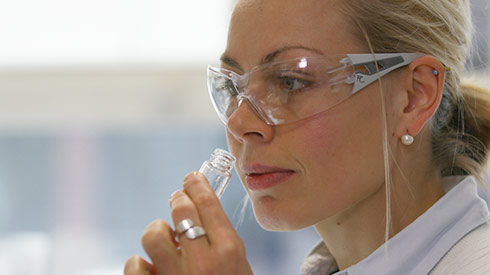
Today, the Symrise genealogy has an increasingly important role in the composition of fine fragrances. It allows you to quickly and easily identify trends, gaps in the market and consumer preferences.
The pace of changing consumer preferences has never been quicker. Add to that the variety of tastes between regions, and you can see why it takes teamwork to stay one step ahead.
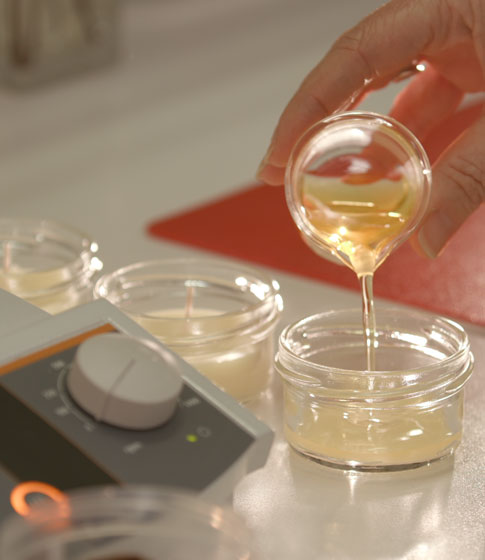
At Symrise, our aim is to always inspire more, both in our customers and in one another. We want to delight consumers worldwide, and to do that, we have to work as a team, particularly as consumer demands are always increasing. “The quantity of samples we send out varies. Today for example we send out ten times more candle samples than a few years ago. It totally depends on the trends.” says Astrid Kaufhold, Head of Application, Scent & Care. “The biggest change we’re seeing is the increase in demand and turnaround speed.”
“We have labs in Germany, France, the US, Singapore and South America, as well as smaller labs all over,” she continues. “From our lab here in Germany, we send out candle samples and personal care and home care samples. Additionally we send out unfragranced bases to our colleagues around the world, to assist them in the development of products. They can also remotely send formulas to our fragrance compounding machines here, which then turn these into scent solutions. All of this means we can support one another, learn from one another and respond to customer needs and briefs as quickly as possible, while also maintaining quality.”
The pace required by our customers means we always need to be on top of the latest trends; that we know about new materials or technology and so on. We work very closely with marketing to make sure that we’re one step ahead.
When it comes to creating a fragrance consumers will love, balance is everything. Walking the fine line between evoking memories with just one note of a familiar scent, and delighting consumer with something new and inspiring is the task facing all of our perfumers. From fine fragrance to homecare, it’s a challenge our perfumers are embracing, armed with deep understanding of changing consumer preferences.
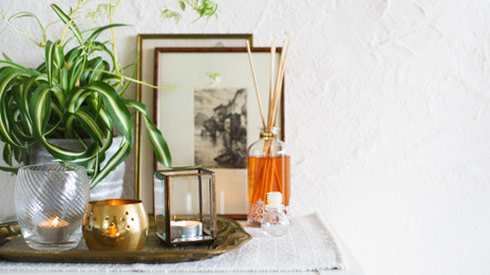
We work hand in hand with our marketing colleagues and with the evaluators, smelling new products, looking at a customer’s product range and mapping trends and markets.